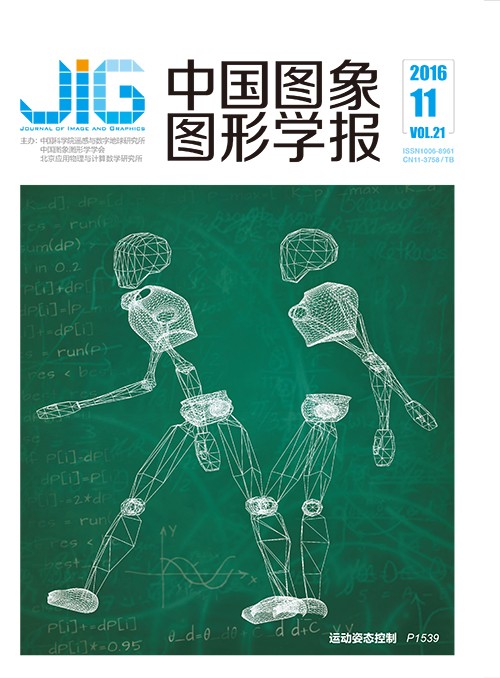
联合模板先验概率和稀疏表示的目标跟踪
摘 要
目的 虽然基于稀疏表示的目标跟踪方法表现出了良好的跟踪效果,但仍然无法彻底解决噪声、旋转、遮挡、运动模糊、光照和姿态变化等复杂背景下的目标跟踪问题。针对遮挡、旋转、姿态变化和运动模糊问题,提出一种在粒子滤波框架内,基于稀疏表示和先验概率相结合的目标跟踪方法。方法 通过先验概率衡量目标模板的重要性,并将其引入到正则化模型中,作为模板更新的主要依据,从而获得一种新的候选目标稀疏表示模型。结果 在多个测试视频序列上,与多种流行算法相比,该算法可以达到更好的跟踪性能。在5个经典测试视频下的平均中心误差为6.77像素,平均跟踪成功率为97%,均优于其他算法。结论 实验结果表明,在各种含有遮挡、旋转、姿态变化和运动模糊的视频中,该算法可以稳定可靠地跟踪目标,适用于视频监控复杂场景下的目标跟踪。
关键词
Target tracking based on a priori probability of template and sparse representation
Tian Meng1,2, Lu Cheng1,2, Zhou Jian1,2, Shi Hanqin1, Tao Liang1(1.Key Laboratory of Intelligent Computingand Signal Processing of Ministry of Education, Anhui University, Hefei 230039, China;2.Institute of Media Computing, Anhui University, Hefei 230601, China) Abstract
Objective Although sparse representation-based tracking approaches show good performance, they usually fail to observe the object motion because of noise, rotation, partial occlusion, motion blur, and illumination or pose variation. This study proposes an algorithm based on sparse representation and a priori probability of object template to improve tracking capability under partial occlusion, rotation, pose change, and motion blur conditions.An L1 tracker is also developed, which runs in real time and possesses better robustness than other L1 trackers. Method The importance of the target template is measured by a priori probability and is considered in the proposed algorithm when updating the object template. Combined with the regularization model, a novel sparse representation model of the object is presented. Based on the proposed target appearance model, an effective template update scheme is designed by adjusting the weighs of the target templates. The tracking particles of the current frame are generated by the last tracking result according to the Gaussian distribution. The sparse representation of each particle to the template subspace is obtained by solving the L1-regularized least square problem, and a target searching strategy is employed to find the particle that well matches the template as the tracking result. The particle filter is then used to propagate sample distribution in the next tracking frame. Result Compared with existing popular tracking algorithms, the proposed algorithm can achieve better tracking performance in diverse test video datasets.Experimental results demonstrate that the proposed algorithm can handle appearance changes, such as pose variation, rotation, illumination,motion blur, and occlusion. Compared with state-of-the-art methods, the proposed algorithm performs well and obtains the best results in the sequences of FaceOcc1, Girl, BlurBody, and Singer1, with average center location errors of 6.8, 4.0, 16.3, and 3.5 pixels, respectively. The average tracking success rate of the proposed algorithm is high. The tracking accuracy is improved with the proposed minimization model for finding the sparse representation of the target, and the real-time performance is achieved by a new APG-based numerical solver for the resulting L1 norm-related minimization problems. Conclusion The proposed algorithm can track target robustly and reliably under partial occlusion, rotation, pose variation, and motion blur conditions.A very fast numerical solver based on the accelerated proximal gradient approach is developed to solve the resulting L1 norm-related minimization problem. Qualitative and quantitative evaluations demonstrate that the performance of the proposed algorithm is comparable to that of the state-of-the-art tracker on challenging benchmark video sequences. The proposed method can therefore be used for engineering applications.
Keywords
target tracking sparse representation priori probability particle filter template update regularization model
|



 中国图象图形学报 │ 京ICP备05080539号-4 │ 本系统由
中国图象图形学报 │ 京ICP备05080539号-4 │ 本系统由